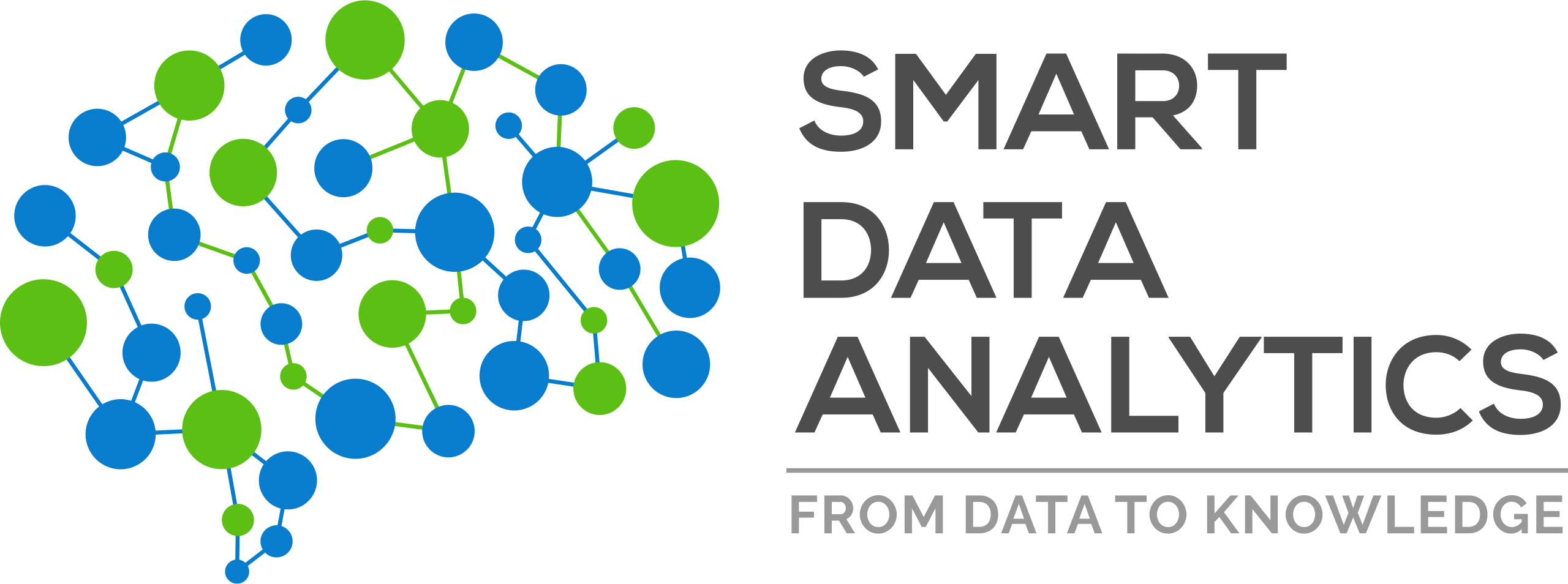We are very pleased to announce that we got three papers accepted for presentation at COLING 2020 (International Conference on Computational Linguistics). The first COLING was held in New York in 1965, with the last iteration in Santa Fe, USA, in 2018. Throughout its history, COLING has brought together researchers from across the field of Computational Linguistics. COLING’2020 continues this tradition and thus welcomes papers on all topics related to both natural language and computation, with the expectation that all papers will include linguistic insight.
Here are the pre-prints of the accepted papers with their abstracts:
- Language Model Transformers as Evaluators for Open-domain Dialogues
By Rostislav Nedelchev, Ricardo Usbeck , and Jens Lehmann.Abstract
Computer-based systems for communication with humans are a cornerstone of AI research since the 1950s. So far, the most effective way to assess the quality of the dialogues produced by these systems is to use resource-intensive manual labor instead of automated means. In this work, we investigate whether language models (LM) based on transformer neural networks can indicate the quality of a conversation. In a general sense, language models are methods that learn to predict one or more words based on an already given context. Due to their unsupervised nature, they are candidates for efficient, automatic indication of dialogue quality. We demonstrate that human evaluators have a positive correlation between the output of the language models and scores. We also provide some insights into their behavior and inner-working in a conversational context. - Knowledge Graph Embeddings in Geometric Algebras
By Chengjin Xu, Mojtaba Nayyeri, Yung-Yu Chen, and Jens Lehmann.Abstract
Knowledge graph (KG) embedding aims at embedding entities and relations in a KG into a low dimensional latent representation space. Existing KG embedding approaches model entities and relations in a KG by utilizing real-valued , complex-valued, or hypercomplex-valued (Quaternion or Octonion) representations, all of which are subsumed into a geometric algebra. In this work, we introduce a novel geometric algebra-based KG embedding framework, GeomE, which utilizes multivector representations and the geometric product to model entities and relations. Our framework subsumes several state-of-the-art KG embedding approaches and is advantageous with its ability of modeling various key relation patterns, including (anti-)symmetry, inversion and composition, rich expressiveness with higher degree of freedom as well as good generalization capacity. Experimental results on multiple benchmark knowledge graphs show that the proposed approach outperforms existing state-of-the-art models for link prediction. - TeRo: A Time-aware Knowledge Graph Embedding via Temporal Rotation
By Chengjin Xu, Mojtaba Nayyeri, Fouad Alkhoury, Hamed Shariat Yazdi, and Jens Lehmann.Abstract
In the last few years, there has been a surge of interest in learning representations of entities and relations in knowledge graph (KG). However, the recent availability of temporal knowledge graphs (TKGs) that contain time information for each fact created the need for reasoning over time in such TKGs. In this regard, we present a new approach of TKG embedding, TeRo, which defines the temporal evolution of entity embedding as a rotation from the initial time to the current time in the complex vector space. Specially, for facts involving time intervals, each relation is represented as a pair of dual complex embeddings to handle the beginning and the end of the relation, respectively. We show our proposed model overcomes the limitations of the existing KG embedding models and TKG embedding models and has the ability of learning and inferring various relation patterns over time. Experimental results on three different TKGs show that TeRo significantly outperforms existing state-of-the-art models for link prediction. In addition, we analyze the effect of time granularity on link prediction over TKGs, which as far as we know has not been investigated in previous literature.

